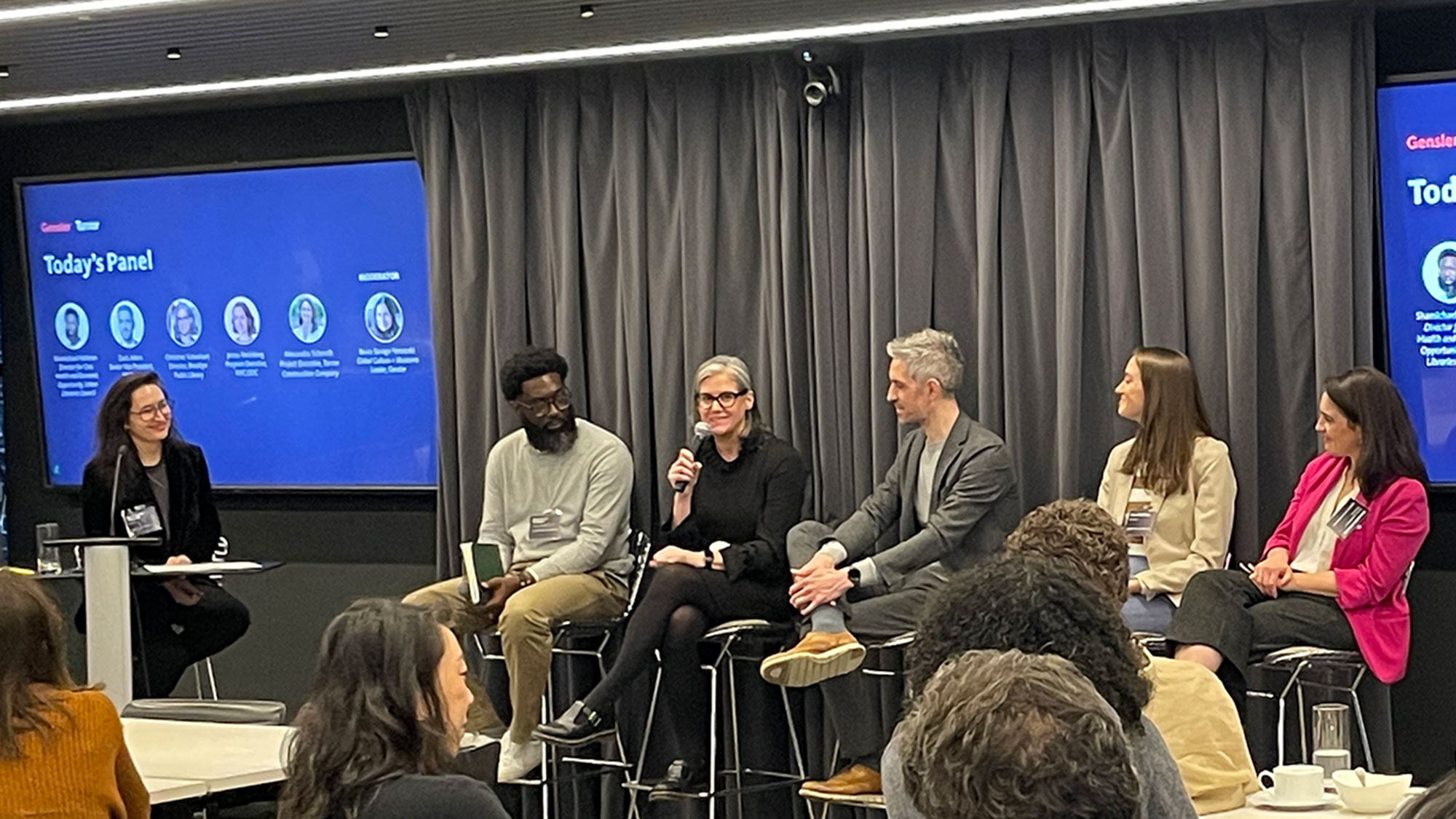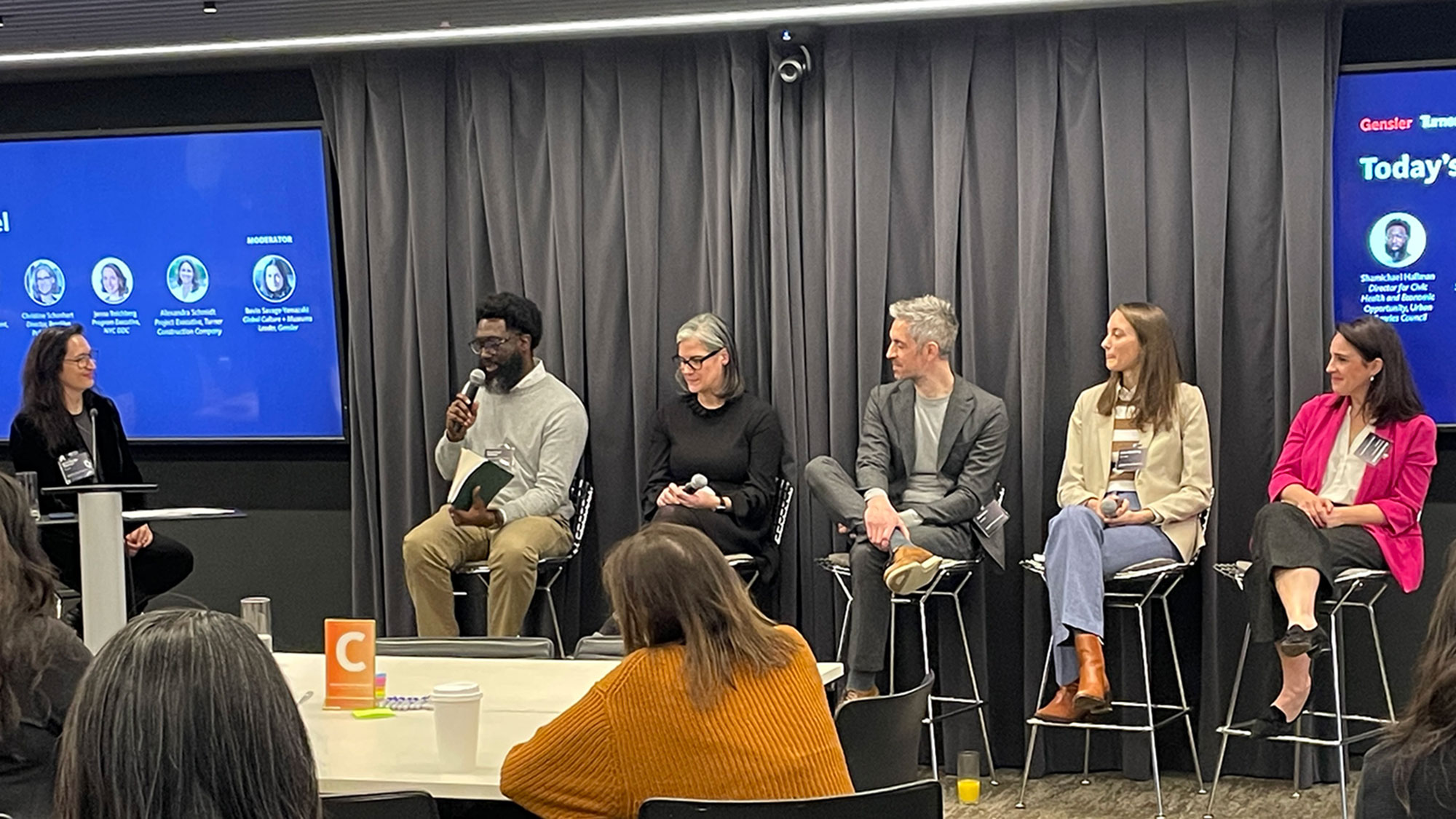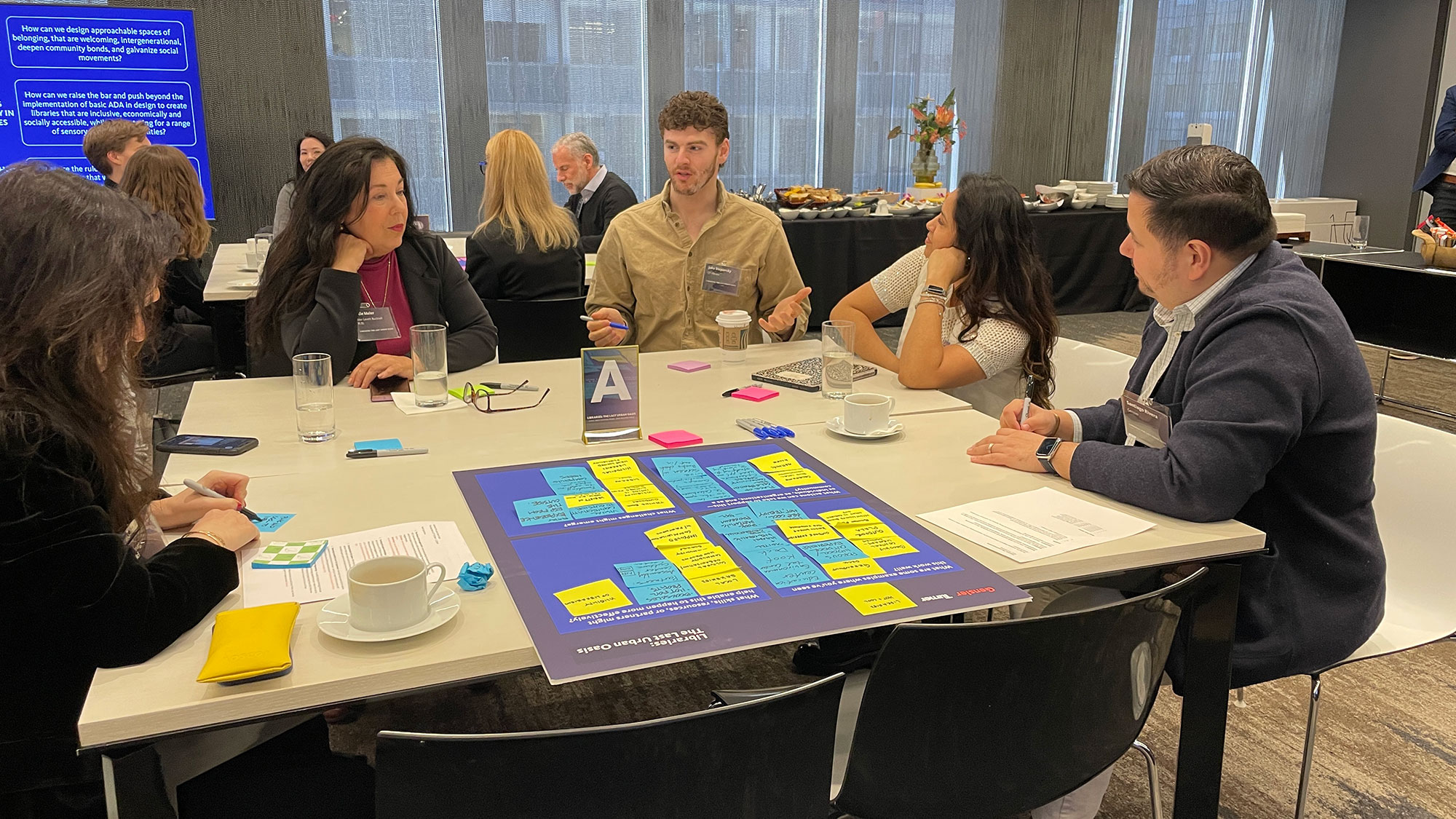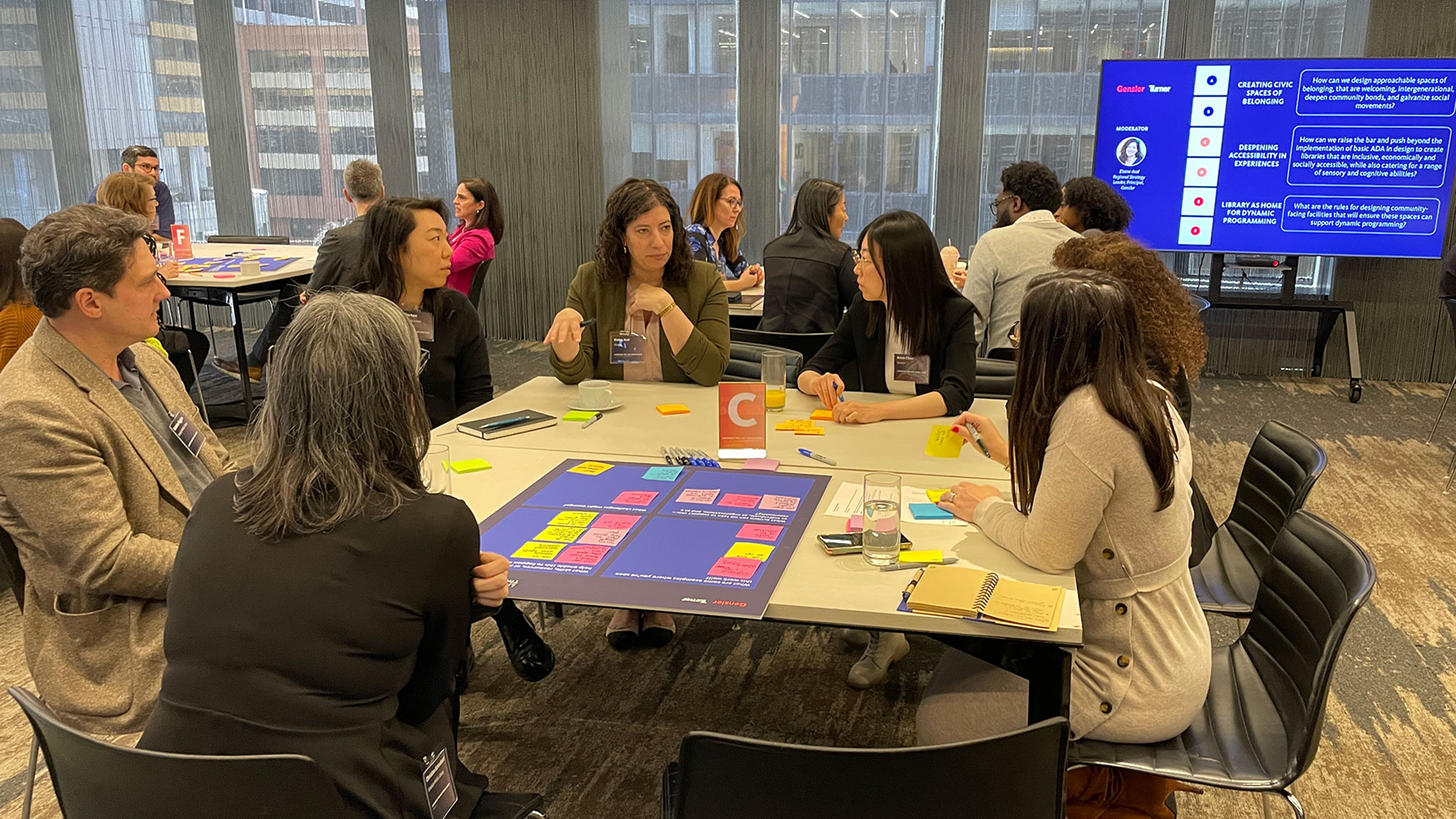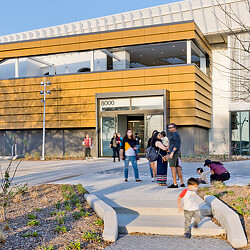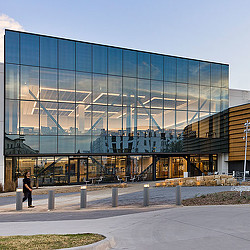Libraries: The Last Urban Oasis
Libraries are no longer just a place for books; they play an integral role as the last bastion of democratic space in our cities.
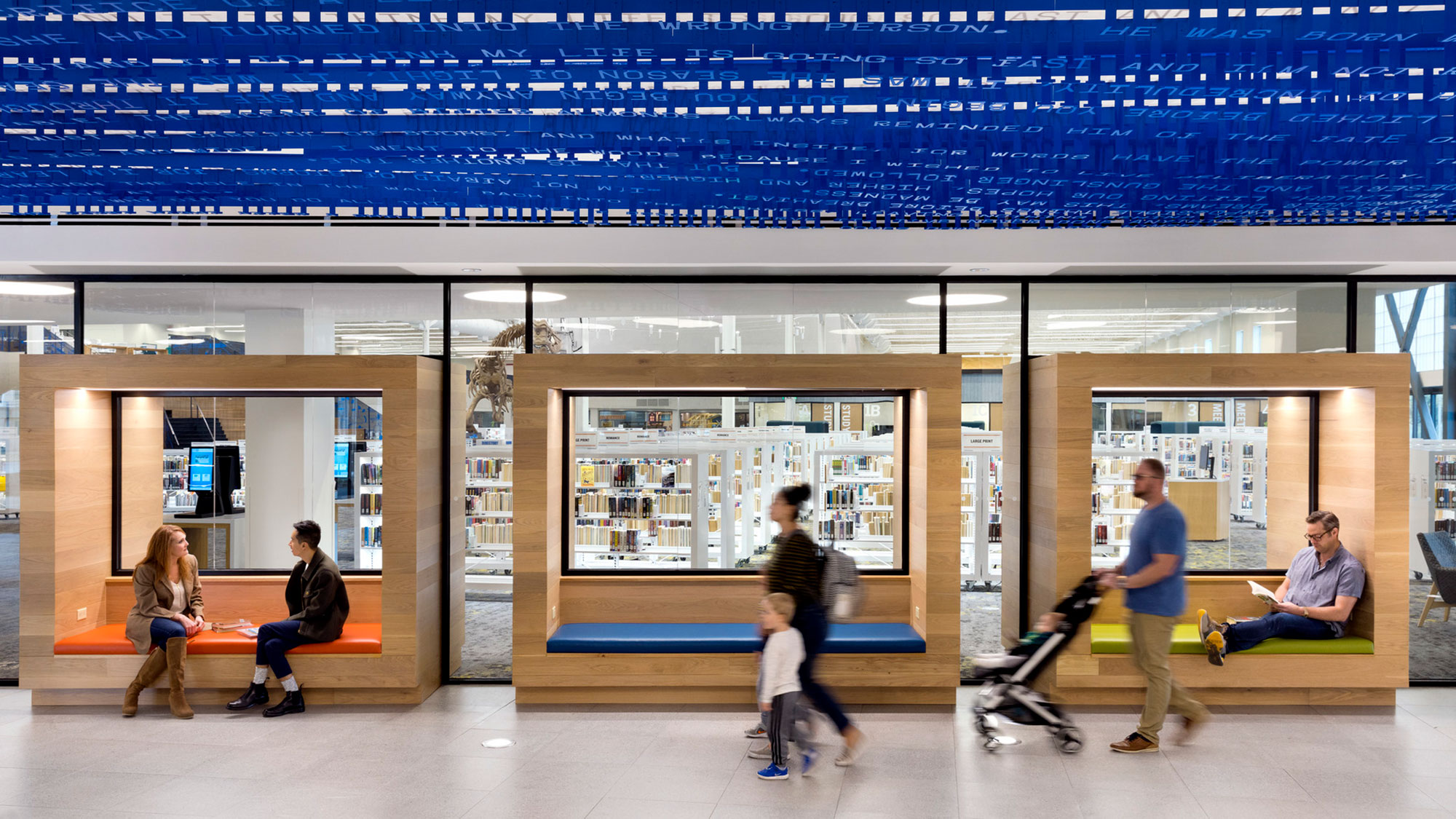
Libraries continue to provide a civic anchor at a time when trust, connection, and access are fraying. They welcome all people — regardless of income, age, housing status, or digital literacy. As cities change, libraries offer a model of inclusive placemaking that supports civic health, combats loneliness, and builds economic opportunity.
Gensler and Turner Construction Company recently convened a panel of experts, including Bevin Savage-Yamazaki, Gensler Culture & Museums leader, along with Shamichael Hallman, director for Civic Health and Economic Opportunity at Urban Libraries Council; Zack Aders, Senior Vice President at NYCEDC; Christine Schonhart, director at Brooklyn Public Library; Jenna Reichberg, program executive at NYC DDC; and Alexandra Schmidt, project executive at Turner Construction Company, to talk about the integral role that libraries play as civic spaces.
Our conversation underscored the profoundly human role libraries play in urban communities, emphasizing their contributions to civic engagement and resilience. By exploring themes of belonging, accessibility, and dynamic programming, we can begin to address the complexities involved in serving diverse communities and meeting varied expectations, ensuring spaces remain universally welcoming. Beyond physical spaces, the discussion highlighted digital library initiatives such as “Books Unbanned,” illustrating the significant potential for digital services to expand reach and impact.
Despite funding challenges and political uncertainties, libraries continue to thrive as vibrant community hubs, increasingly offering innovative, community-specific services. Thoughtful design is critical in creating library spaces that are both physically and psychologically accessible, adaptable, and capable of supporting diverse programming. Designing for such a wide-ranging demographic is increasingly challenging, but this has only spurred libraries to imagine new ways of adding value to the community.
Here are some key takeaways from the discussion:
The Future of Civic Space in New York
Bevin Savage-Yamazaki, Gensler: Let’s start by talking about the future of civic spaces in New York. Shamichael, you recently wrote a book called “Meet Me at the Library,” which covers topics such as loneliness and civic health. What steps can we take to drive the future of civic space in New York that creates community, tackles loneliness, and celebrates the uniqueness and cultural history of each neighborhood?
Shamichael Hallman, The Urban Libraries Council: It’s really important to ground this conversation in this concept of civic health. And there’s this really beautiful definition, which was established in the New Hampshire Civic Health Index in 2020, that defines civic health as the ways in which residents of a community participate in civic activities that strengthen social capital, enhance interconnections, build trust, help each other, talk about public issues and challenges, volunteer in government and non-profit organizations, stay informed about their communities, and participate directly in crafting solutions to various social and economic challenges. We’re in this moment now where we’re in great need of spaces that can cultivate that.
Christine Schonhart, Brooklyn Public Library: Literally anyone can come into our public library. You do not have to buy anything. You do not even have to read a book. You can sit there, if that’s what you want to do. It’s free. And so, when we’re thinking about how we design those spaces for those civic uses, that’s what we’re doing at the library. We’re taking care of each other. We’re providing you that place, we’re making sure that your child has a book to read or a story time to go to if you need 20 minutes to take a Zoom call. Those inspiring spaces don’t necessarily have to be grand cathedrals; they just need to be spaces that work for people. And I think that’s the promise of the public library.
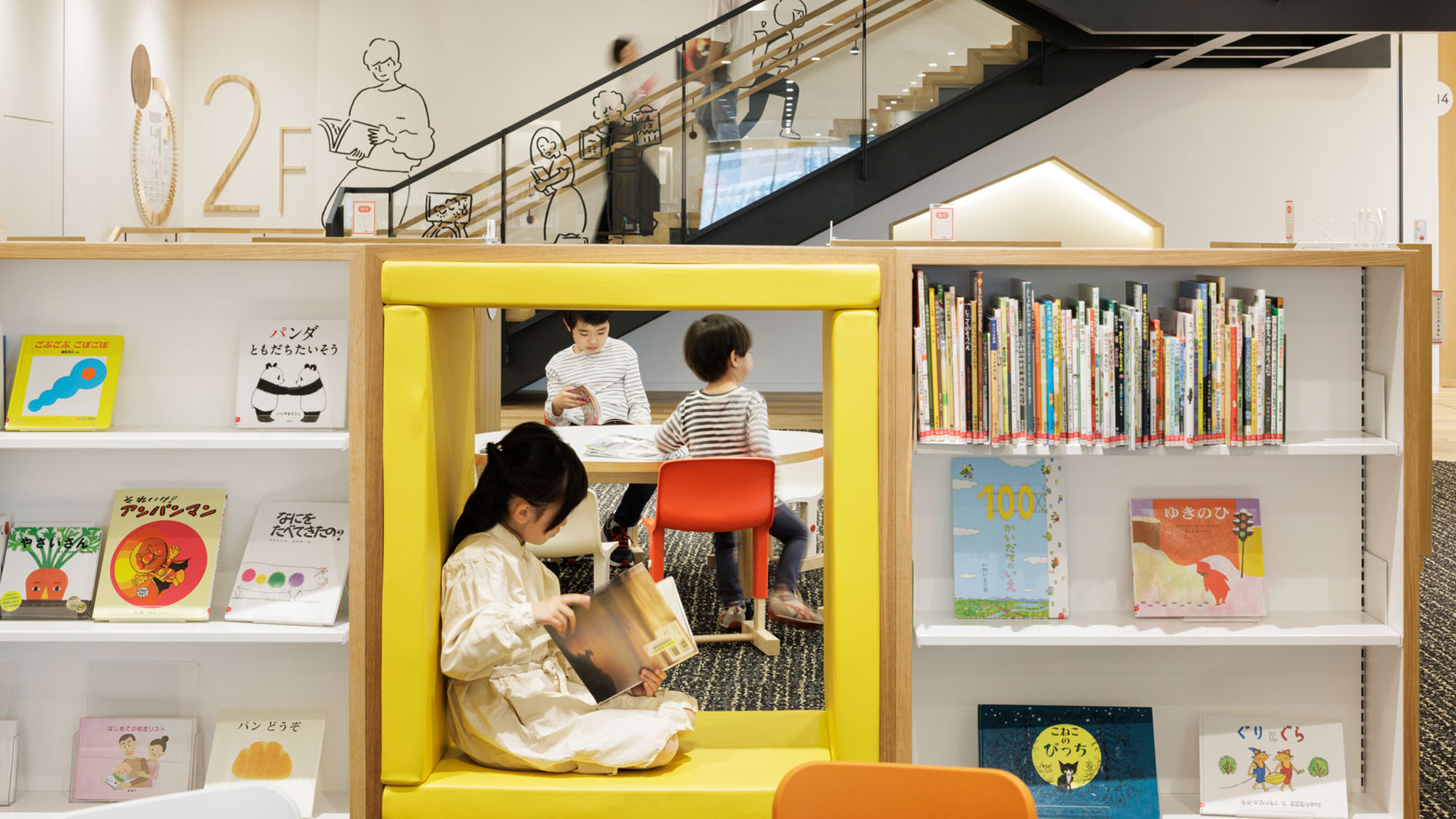
Deepening Accessibility
Bevin: How can we raise the bar and push beyond the implementation of basic ADA in design by creating libraries that are inclusive and economically and socially accessible, while also catering to a range of sensory and cognitive abilities?
Christine Schonhart, Brooklyn Public Library: This includes going beyond ADA to address inclusivity in more proactive and more diverse ways by catering to a range of physical, sensory, and cognitive abilities, and even more importantly, across generational communities. When we’re designing these spaces, we need to think about where we can offer something different that might be more comfortable, such as wider chairs with arm rests for people with mobility issues.
Shamichael Hallman, The Urban Libraries Council: In Memphis, there was a huge opportunity for the library to be this multi-site place where artists and arts organizations could do their work and many of these folks told us that they had no problem engaging in mutual aid, where they would have community programming in exchange for using the space. And so, that’s another level of accessibility where we can provide a space for folks who need it.
Expanding Definitions of Inclusion and Belonging
Bevin: Through the soft power lens of the library, how can we best design approachable spaces of belonging that are intergenerational and welcoming, that deepen community bonds, galvanize social movements, and support our city?
Jenna Reichberg, New York City Department of Design and Construction (NYC DDC): I had a mentee, through a program for first-generation college students. One day we decided to go to one of the New York public libraries in Midtown, and as we walked through the front door, she took a step back and said, “I can’t be here. This is too fancy.” Not everyone is used to being in spaces like this. How can we find middle ground with spaces that are beautiful, maintainable, and resilient, in a way that it doesn’t feel unapproachable?
Christine Schonhart, Brooklyn Public Library: [Post-pandemic] we asked, what if we offered people a library card who are in areas where their books are being banned? This is now the program where we offer teens across the United States the opportunity to get a Brooklyn Public Library card and read eBooks that may be banned in their community. I think that is a great equalizer. It’s the important role the public library is playing. Several other libraries have joined us since then.
Zack Aders, New York City Economic Development Corporation (NYCEDC): On the two new builds that we’ve done, one at Charleston for New York Public Library and then Red Hook for Brooklyn, we were able to lay out the spaces in a way where there can be community spaces. That event space is accessible directly from the outside and oriented in a way where the restrooms are also connected, and the rest of the library can be closed off and secure after hours.
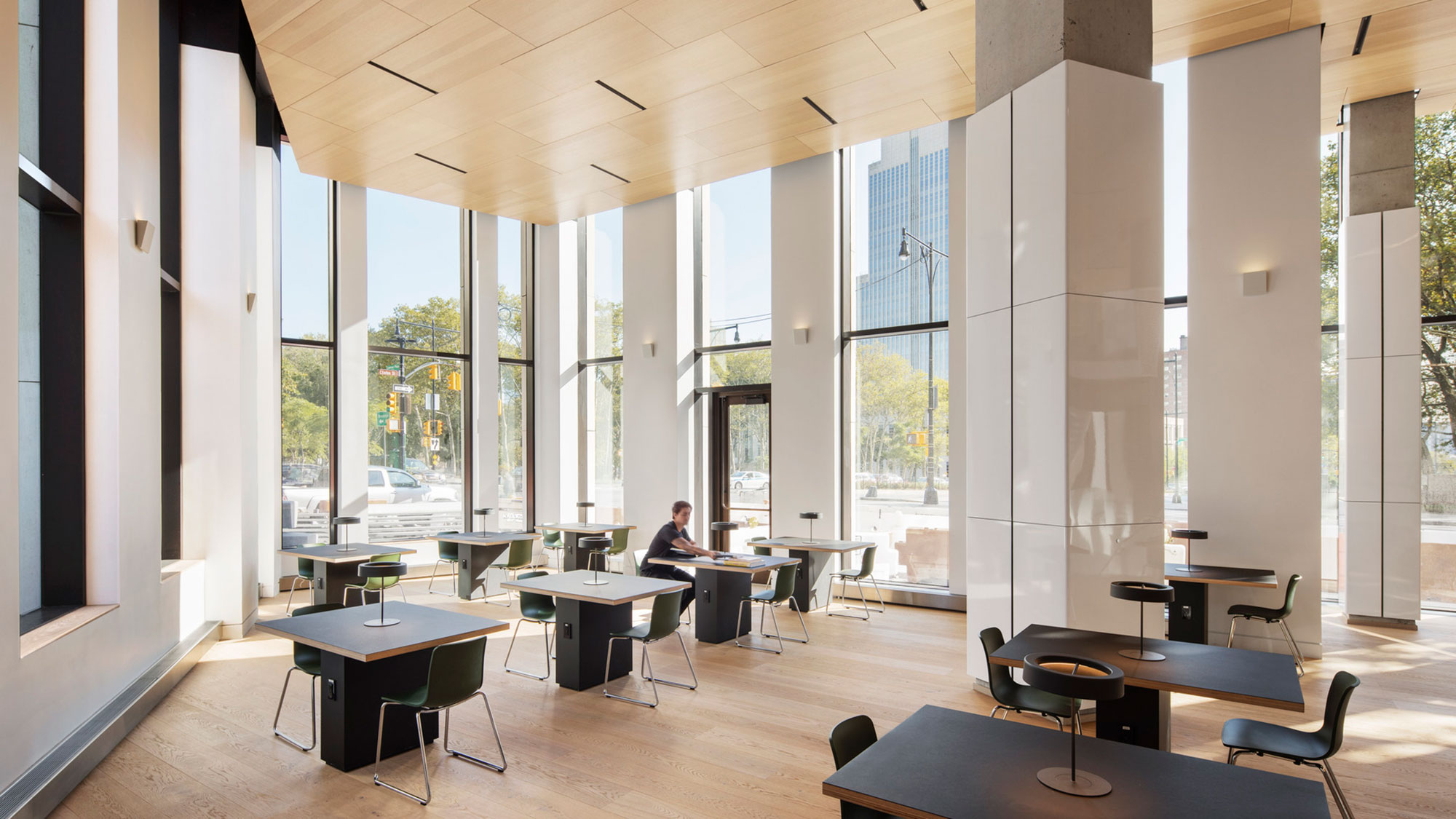
Adaptive Programming
Bevin: What are the rules for designing community-facing facilities that will ensure these spaces can support dynamic programming regardless of technology? And how can technology support the future of the library?
Alexandra Schmidt, Turner Construction Company: In my Brooklyn neighborhood, the local library was recently rebuilt into a modern, multipurpose facility. It’s now also an environmental education center, offering programs like vegetable planting and sustainability workshops. It’s transformed from just a place where you go with grandma and grandpa to get a book into a vibrant, inclusive hub for learning and community engagement.
Shamichael Hallman, The Urban Libraries Council: The Urban Libraries Council just published a tool called the Business Value Calculator that allows libraries to calculate the economic impact for entrepreneurs. Folks are looking for everything — from the availability of coworking space to 3D printers and other equipment needed for aspiring entrepreneurs.
Resilient and Maintainable Structures
Bevin: Zack, this is an area that you focus on a lot in your work and are thinking about on a more urban scale. How can we design climate-responsive libraries that can act as an intermediate support system for communities for short-term disruptions in power, water, and other utilities?
Zack Aders, New York City Economic Development Corporation (NYCEDC): In resiliency and energy-saving measures, libraries as public buildings need to do many things at the same time, not just programming-wise, but also through the building’s functionality. The great thing about libraries is that as a program and as a structure, and typically size here in New York, it really lends itself to net zero energy.
Alexandra Schmidt, Turner Construction Company: Libraries face complex, competing priorities — whether it’s infrastructure upgrades like HVAC and electrical systems or full-scale renovations. The challenge is balancing these needs while still designing spaces that offer a sense of escape and inspiration.
Jenna Reichberg, New York City Department of Design and Construction (NYC DDC): We started with libraries as a pilot program [for advanced capital planning] last year, to gather enough data on all of these locations to make informed decisions that can be five or 10 years ahead. Advanced planning goes hand-in-hand with the building’s resiliency and being able to withstand impacts from climate change.
For media inquiries, email .
